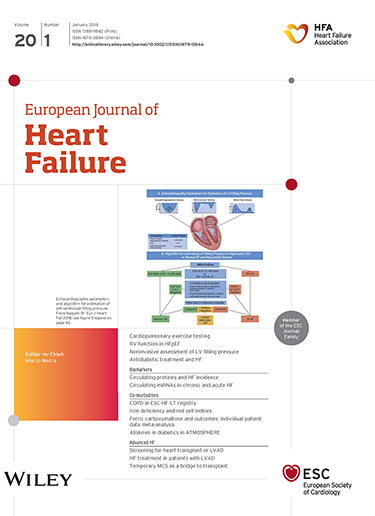Donor heart allocation systems in Europe. A scientific statement of the Heart Failure Association of the ESC
IF 16.9
1区 医学
Q1 CARDIAC & CARDIOVASCULAR SYSTEMS
引用次数: 0
Abstract
Heart transplantation remains the gold standard for treatment of most patients with advanced heart failure (HF), but despite improvements of organ recovery and utilization, donor heart scarcity remains a critically limiting factor. Detailed heart allocation systems (HASs) are in place to ensure use of organs for appropriate candidates, In Europe multiple, different HASs have evolved in different countries or communities of collaborating countries, like Eurotransplant or Scandiatransplant. In this scientific statement, we review the generic ethical and practical principles underlying allocation principles and examine and describe different European HASs with the purpose of discussing impact of outcomes for patients with advanced HF. It is shown that European HASs differ significantly with respect to which patients are prioritized and the methods by which the prioritization is performed. It is argued that the most commonly used parameter to describe success of a HAS, namely 1‐year survival after heart transplantation, is a poor metric of HAS performance. The impact of HASs should be evaluated by several measures such as survival from listing, time to transplantation, the characteristics of patients undergoing heart transplantation, and over a longer time interval to understand the balance of early and late post‐transplant risks and benefit. Mapping European HASs is a step towards understanding these factors and further research should determine the optimal HAS in a given HF population at a given time.欧洲的供体心脏分配系统。ESC心力衰竭协会的科学声明
心脏移植仍然是大多数晚期心力衰竭(HF)患者治疗的金标准,但尽管器官恢复和利用有所改善,供体心脏稀缺仍然是一个严重的限制因素。详细的心脏分配系统(HASs)已经到位,以确保为合适的候选人使用器官。在欧洲,不同的HASs在不同的国家或合作国家的社区发展,如Eurotransplant或Scandiatransplant。在这篇科学声明中,我们回顾了分配原则的一般伦理和实践原则,并检查和描述了不同的欧洲HASs,目的是讨论晚期心衰患者结局的影响。结果表明,欧洲HASs在哪些患者被优先考虑以及优先考虑的方法上存在显著差异。有人认为,描述心脏移植成功的最常用参数,即心脏移植后的1年生存率,是一个较差的心脏移植性能指标。HASs的影响应该通过几个指标来评估,如上市后的生存率、移植时间、接受心脏移植患者的特征,以及更长的时间间隔,以了解移植后早期和晚期风险和获益的平衡。绘制欧洲HASs是了解这些因素的一步,进一步的研究应该确定给定HF人群在给定时间的最佳HASs。
本文章由计算机程序翻译,如有差异,请以英文原文为准。
求助全文
约1分钟内获得全文
求助全文
来源期刊

European Journal of Heart Failure
医学-心血管系统
CiteScore
27.30
自引率
11.50%
发文量
365
审稿时长
1 months
期刊介绍:
European Journal of Heart Failure is an international journal dedicated to advancing knowledge in the field of heart failure management. The journal publishes reviews and editorials aimed at improving understanding, prevention, investigation, and treatment of heart failure. It covers various disciplines such as molecular and cellular biology, pathology, physiology, electrophysiology, pharmacology, clinical sciences, social sciences, and population sciences. The journal welcomes submissions of manuscripts on basic, clinical, and population sciences, as well as original contributions on nursing, care of the elderly, primary care, health economics, and other related specialist fields. It is published monthly and has a readership that includes cardiologists, emergency room physicians, intensivists, internists, general physicians, cardiac nurses, diabetologists, epidemiologists, basic scientists focusing on cardiovascular research, and those working in rehabilitation. The journal is abstracted and indexed in various databases such as Academic Search, Embase, MEDLINE/PubMed, and Science Citation Index.
 求助内容:
求助内容: 应助结果提醒方式:
应助结果提醒方式:


